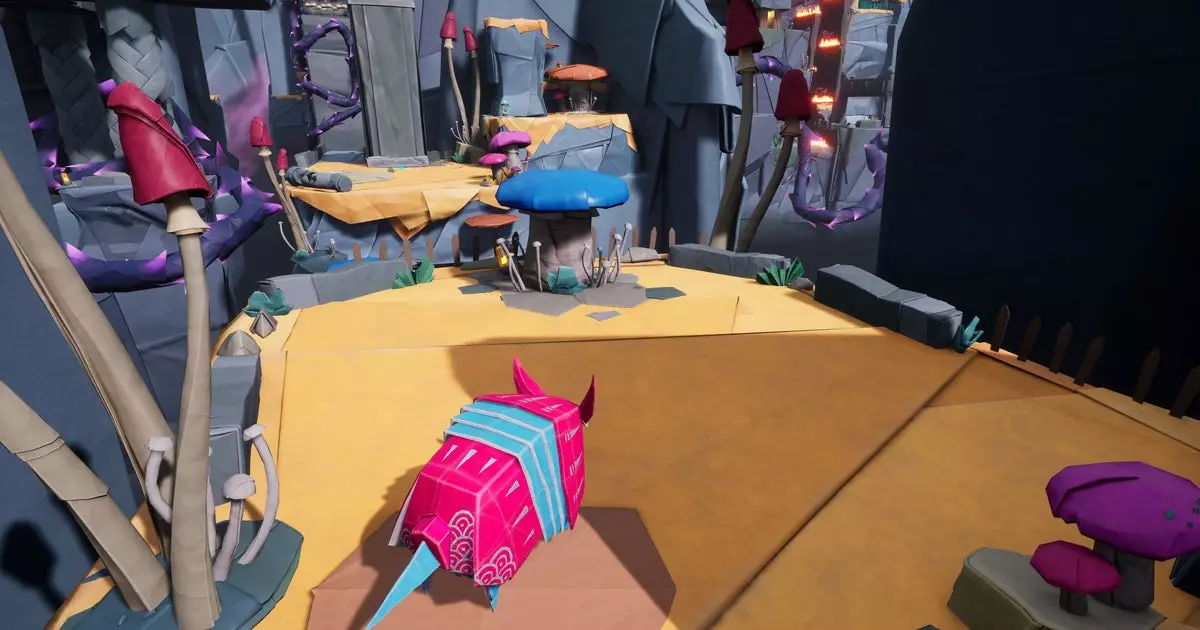The world of video games often finds itself at the crossroads of irony and sincerity, forging paths that can leave players both enchanted and perplexed. In this context, “Hirogami,” a 3D action platformer, emerges as a curious case study—a digital homage to the intrinsic beauty of paper, ironically set against the backdrop of a narrative about combating a “blight” of digital creatures. This dichotomy poses questions about authenticity, creativity, and the messages we as players extract from our digital experiences.
At its core, “Hirogami” invites players to immerse themselves in a universe heavily inspired by the delicate art of origami. It paints a whimsical world where paper comes alive, allowing interaction through various transformations—an armadillo, a frog, an ape, and more, each represented with childlike ingenuity. Yet, there is an undeniable irony in the fact that a digital platform promotes its admiration for paper-based artistry while existing solely in a digital form. One must ponder whether the game’s creators are genuinely paying homage to traditional art forms, or merely adopting the visual aesthetic of paper without embracing the tactile experience it represents.
Video games, as interactive media, can often engage us on multiple levels, challenging not just our skills but our interpretative abilities as well. The blurring of lines between the digital and the physical creates a complicated relationship with authenticity, especially in “Hirogami,” where the player is thrust into a mission to “cleanse the mind-warped inhabitants” of a paper world. The irony lies in the expectation that we should champion a fragile form of expression—not through hands on paper, but through clicks and keystrokes. This abstraction raises valid questions: Does the proliferation of digital forms jeopardize the essence of original mediums? Or can they coexist, enriching our understanding of creativity?
Diving deeper into the play mechanics of “Hirogami,” one discovers gameplay that mirrors typical platforming tropes, yet with clever nods to its origami roots. Players are urged to explore hidden corners of a vibrant world, wielding the paper fan to combat the blight—mechanics that resonate with traditional action games. Mechanics such as transforming into a sheet of paper to overcome traps and regain mobility through fiery updrafts create a whimsical charm. However, the game may miss an opportunity by not incorporating minigames that simulate the delicate folding techniques of origami—a feature that could tether the gameplay more closely to the very essence of paper craft, enhancing the homage it seeks to represent.
Moreover, the aesthetic vibrancy and lush art direction are commendable, evoking a tactile sense of interaction that tangibly contrasts the narrative’s focus on fragility. Yet, the reliance on conventional premise structures in video games—collecting items, defeating enemies, uncovering secrets—can risk a sense of redundancy, potentially dulling the innovative spirit the game aims to encapsulate. The cleverness of its transformations, which break from traditional character setups, shines, but without elemental innovations in gameplay design, it may perilously drift into mediocrity.
In the midst of our digital evolution, “Hirogami” hints at an ancient struggle: the fear of obsolescence that seems to haunt traditional mediums. By invoking the notion that “print is dead,” it invites a reflection on the state of artistic expression in the wake of a rapidly digitizing world. Might there come a day when nostalgic currents encourage virtual storytellers to narrate the tales of long-forgotten print magazines as mere artifacts of time? As absurd as that sounds, the meta-commentary that could derive from such a concept ties back into the heart of “Hirogami”’s narrative—struggling against an encroaching blight might well parallel our confrontation with the erosion of traditional art forms.
As we look ahead to its release in 2025, “Hirogami” embodies a fascinating narrative stitched between irony and admiration—a digital piece lauding the fragility of paper. The challenge ahead lies in transforming this exploration into an enriching experience grounded in authenticity. If the creators can navigate the complexities surrounding their homage effectively, they might just uncover the delicate balance required to honor traditional art forms within the digital landscape. In the end, embracing both realms—digital and print—will be essential, for it is the collaboration of mediums that will ensure the vitality of creativity in years to come.


Leave a Reply